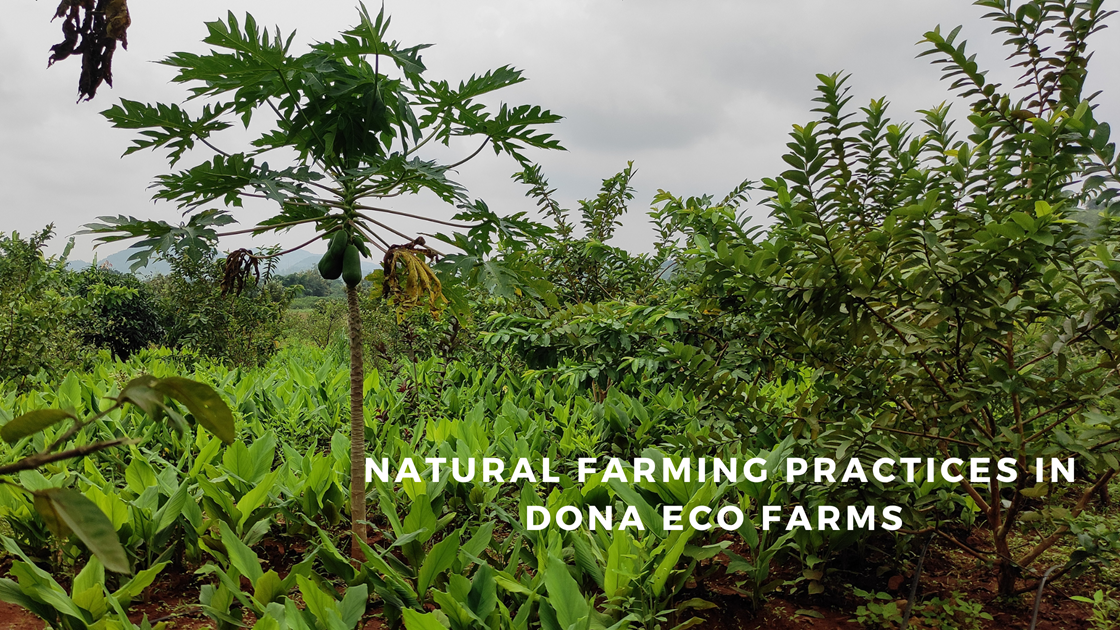Principles of Natural Farming:
Natural farming, often referred to as “do-nothing farming,” is a holistic approach that emphasizes working in harmony with nature rather than trying to dominate it. Rooted in the philosophy of minimal human intervention, natural farming is built on the following key principles:
- No-Tillage: The soil is left undisturbed to maintain its natural structure and fertility. This helps preserve the vital ecosystem of microorganisms and earthworms that enhance soil health.
2. No Chemical Fertilizers: Instead of synthetic inputs, natural farming relies on organic matter like compost, mulch, and crop residues to nourish the soil.
3. No Chemical Pesticides: Emphasizing biodiversity, natural farming encourages the use of natural predators and companion planting to manage pests.
4. No Weeding: Weeds are considered an integral part of the farm ecosystem, helping to improve soil fertility and provide habitat for beneficial insects.
5. Healthy Soil Microbiome: A thriving soil microbiome is the foundation of natural farming. It plays a crucial role in maintaining the health of the soil, which in turn supports robust plant growth, healthy animals, and ultimately, human well-being. The focus is on nurturing a diverse and active microbial ecosystem, ensuring that the soil remains fertile and resilient.
6. Crop Diversity: A natural farming system emphasizes the cultivation of a wide variety of crops. Ideally, a farm should cultivate at least eight different crops throughout the year. This diversity not only enhances soil fertility and reduces the risk of pests and diseases but also contributes to the overall stability and sustainability of the farming ecosystem.

7. Integration of Animals: Incorporating animals into the farming system is a key principle of natural farming. Animals contribute to the fertility of the soil through their natural behaviors, such as grazing and manure production. Their presence creates a symbiotic relationship with the crops, enhancing the farm’s productivity and sustainability while promoting biodiversity and ecological balance.
Our Farm’s Journey: Implementing the Subash Palekar Natural Farming Model:
At Dona Eco Farms, we’ve embraced the Subash Palekar Natural Farming (SPNF) model, and it has transformed our approach to farming. On our one-acre plot, we’ve created a system that not only aligns with these natural farming principles but also yields a variety of crops sustainably.
Layout of Our Natural Farm:
The foundation of our farm’s layout is carefully planned spacing and crop diversity.
Mango Trees: We’ve planted mango trees at a distance of 36 feet. This wide spacing allows the trees to grow naturally without competition for sunlight, and it also opens up opportunities to intercrop with other crops.
Intercropping with Ginger and Turmeric: In the 9-foot gaps between these trees, we’ve cultivated ginger and turmeric. These crops thrive in the shade provided by the growing trees and benefit from the nutrient-rich soil created by natural farming techniques.
Diverse Fruit Cultivation: To enhance the biodiversity of our farm, we’ve also planted a variety of fruit-bearing trees in strategic locations. Guava, custard apple, pomegranate, ber, lemons, oranges, papaya, and amla thrive in the center of each 36X36 model. Each tree species contributes to the ecosystem by attracting different pollinators, enriching the soil with organic matter, and providing food for both humans and wildlife. Sunflower is intercropped in between the trees.

Arecanut Integration: Additionally, we’ve integrated arecanut palms into our farming model. These palms not only add another layer of diversity but also contribute to the farm’s overall sustainability by providing shade and serving as windbreaks.
Related Post: The Journey of Dona Eco Farms: From Barren Land to Lush Green Paradise
Success of Natural Farming:
Through careful application of the Subash Palekar Natural Farming model, our farm has evolved into a sustainable, self-sufficient ecosystem. The combination of wide-spaced mango trees, intercropped ginger and turmeric, and a variety of fruit trees has created a balanced environment where each element supports the others.
This approach has not only reduced our reliance on external inputs but also enhanced the health of our soil and the resilience of our crops. By following the principles of natural farming, we’re proud to contribute to a more sustainable future while producing healthy, nutritious food.
This blog aims to showcase the benefits and practical applications of natural farming while sharing insights from the evolution of Dona Eco Farms.
